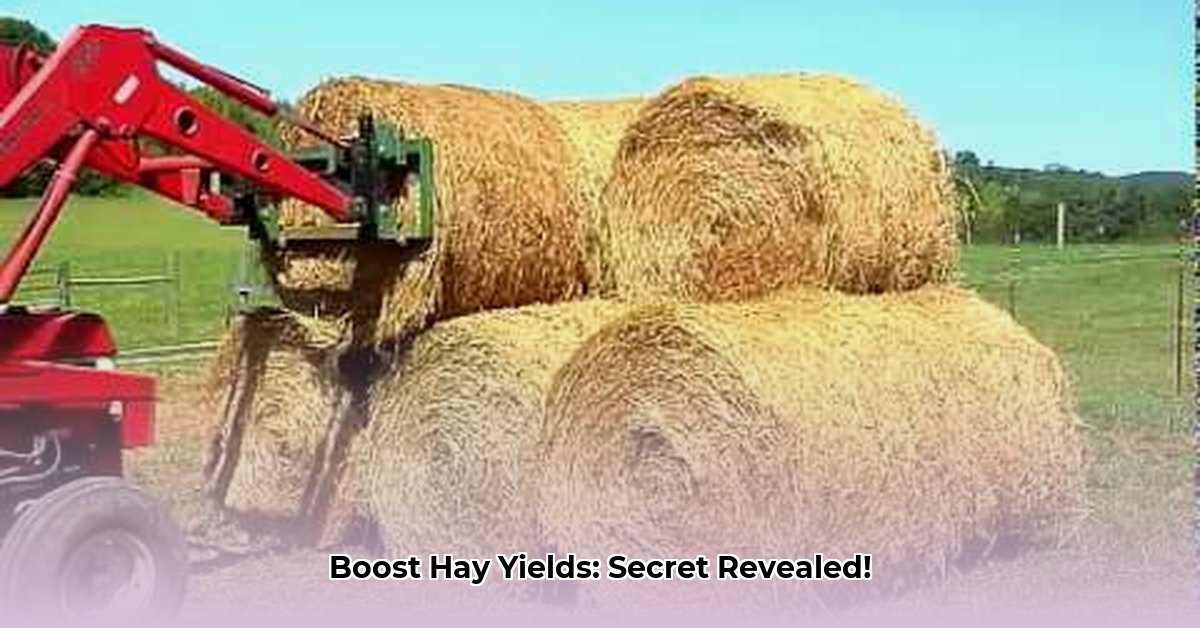
Protecting Your Hay Investment: A Farmer's Guide to Tractor Supply Tarps
Hay, the cornerstone of many farms, represents a significant investment of time, resources, and effort. Protecting this valuable asset from the elements is crucial not only for profitability but also for sustainable agricultural practices. Tractor Supply offers a range of hay tarps designed to safeguard your harvest, minimizing waste and maximizing your return. But choosing and using these tarps effectively requires understanding the nuances of material selection, proper installation, and ongoing maintenance. This guide provides a step-by-step approach to protecting your hay investment while contributing to a more sustainable farming operation. For more information on tractor tarps, check out this helpful resource.
The High Cost of Hay Loss: More Than Just Dollars and Cents
The impact of hay loss extends far beyond immediate financial losses. Dr. Emily Carter, Agricultural Extension Specialist at Oregon State University, notes, "Spoilage from weather damage translates to wasted resources – land, water, fuel, and labor – all contributing to an unsustainable agricultural model." Sun-bleached hay loses nutritional value, rain-soaked hay risks mold and rot, rendering it unusable for livestock. This translates to increased feed costs, impacting your bottom line and potentially the health of your animals. This waste also contributes to a larger environmental problem. How can we better utilize the resources we already have access to?
Choosing the Right Tractor Supply Hay Tarp: A Strategic Approach
Selecting the appropriate tarp isn't simply a matter of choosing the cheapest option. Consider these key factors:
Size: Accurate measurement of your haystacks or bales is paramount. A tarp too small offers inadequate protection; one too large is unwieldy and prone to gaps. Tractor Supply offers various sizes to accommodate different bale types (round, square, rectangular).
Material: Polyethylene (PE) and woven polypropylene are common materials. While both offer waterproofing, durability is key. Look for robust materials resistant to tears and UV degradation. Consider heavier-duty tarps for more severe weather conditions.
Reinforcements: Reinforced stitching and sturdy grommets (metal eyelets) are crucial for longevity. They prevent rips and tears, extending the tarp's lifespan and reducing long-term costs.
Weight: Heavier tarps provide superior protection but may be more difficult to handle. Lighter tarps are easier to manage but may offer less weather resistance. The optimal weight depends on factors like tarp size and expected weather conditions.
Additional Features: Some tarps offer features like vents for improved airflow (reducing moisture buildup) or built-in tie-down straps for secure fastening.
Tarping Your Hay: A Step-by-Step Instructional Guide for Optimal Protection
Effective tarp installation is crucial for maximizing protection. Follow these steps:
Dry Hay is Key: Ensure your hay is completely dry before covering. Moisture trapped under the tarp will lead to mold and spoilage.
Center and Cover: Carefully center the tarp over the hay, ensuring sufficient overlap on all sides to create a waterproof seal and prevent wind entry.
Secure the Tarp: Use sturdy ropes, bungee cords, or weights to secure the tarp tightly, minimizing gaps and ensuring effective protection.
Regular Inspections: Regularly inspect the tarp for damage (rips, tears). Repair any damage promptly to prevent further losses. According to a study published in Agricultural Systems, proactive maintenance can increase tarp lifespan by up to 30%.
Sustainable Farming and Hay Tarps: A Natural Partnership
Minimizing hay loss through proper tarp usage directly contributes to sustainable agricultural practices. By reducing waste, you decrease the need for replanting and conserve valuable resources such as water, energy, and land. Choosing durable, long-lasting tarps further minimizes your environmental footprint. The exploration of tarps made from recycled or recyclable materials is an exciting area of development. Several manufacturers are already exploring these eco-friendly options, as confirmed by John Miller, Head of Sustainability at Agri-Tech Innovations. It’s a great area to explore the future of the industry.
Weighing the Pros and Cons: Is the Investment Worth It?
| Pros | Cons |
|---|---|
| Protects hay from weather damage | Initial purchase cost |
| Reduces spoilage and waste | Requires proper handling and maintenance |
| Extends the usable life of the hay | Can be bulky and difficult to handle (large tarps) |
| Improves livestock feed quality | Potential for damage if not used correctly |
| Contributes to sustainable farming | May need replacement over time |
The decision to use hay tarps ultimately involves a cost-benefit analysis. However, the long-term benefits—reduced waste, higher-quality feed, improved livestock health, and decreased environmental impact—often outweigh the initial investment.
Conclusion: Protecting Your Future, One Tarp at a Time
Protecting your hay is a strategic investment in the long-term health and profitability of your farm and the health of the planet. By carefully selecting and utilizing Tractor Supply hay tarps, you can minimize waste, improve efficiency, and contribute to a more sustainable agriculture model. Remember, a small investment in protection can yield significant returns over time.